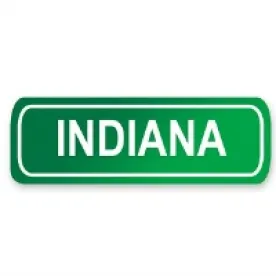Highlights
Indiana amends mask order for students, saying face coverings are not required for students in the classroom if they are at least 3 feet apart and facing in the same direction
Effective July 27, 2020, Indiana requires students in grades 3-12, faculty, staff, volunteers, and anyone else in schools to wear face coverings, with some exemptions
Exceptions will be granted for strenuous physical activity, medical or health purposes, and disabilities, exercising, and eating and drinking
Indiana Gov. Eric Holcomb has amended the mandatory face covering declaration for schools. While the previous order required 6 feet of social distancing in the classroom in order to not wear a mask, the new order, issued on July 30, says students do not need to wear face coverings if they can maintain at least 3 feet apart and face in the same direction.
The new exemptions also allow an instructor to give a child permission to remove a face covering temporarily during the school day.
On July 24, Gov. Holcomb signed an executive order that requires face coverings to be worn in public indoor spaces, commercial entities, public transportation, and outdoor public space when social distancing from non-household members cannot be achieved. The mandate became effective July 27 and will run until at least Aug. 26, 2020.
The Indiana Department of Education (IDOE) had released on June 5 Indiana’s Considerations for Learning and Safe Schools, IN-CLASS, the state’s COVID-19 Health and Safety Re-entry Guidance document for schools. IN-CLASS had recommended that all employees and students wear cloth face coverings, but specifically noted that students could forego the use of a mask when social distancing.
However, the executive order now will require the use of masks in schools by students in the classroom if they cannot be at least 3 feet apart and during co-curricular and extra-curricular activities, with exceptions for strenuous physical activity, medical or health purposes, disabilities, exercising, and eating and drinking. Gov. Holcomb indicated that enforcement of this requirement will have an emphasis on education.
The announcement highlighted that face coverings can be made of synthetic or natural fabrics, including cotton, silk or linen, and can include a plastic face shield that covers the nose and mouth. Face coverings may be factory-made, sewn by hand, or improvised from household items, including scarves, bandannas, T-shirts, sweatshirts or towels.
But for certain student populations, the use of face coverings by teachers may impede the education process. These include students who are deaf or hard of hearing, students receiving speech/language services, young students in early education programs, and English-language learners. There are products (e.g., face coverings with clear panels in the front and face shields) to facilitate the best possible communication among these populations. The IDOE offers a list of resources to locate such face covering options.
Both the original and new order specify that either a fabric face covering or a face shield meet the mandate requirements. Important exemptions from the July 24 and July 30 orders for K-12 schools include:
-
Faculty and staff, other than to prepare food or meals, are not required to wear a face covering or face shield if 6 feet social of distancing can be maintained
-
Students may remove face coverings or face shields during in-person instruction as long as at least 3 feet (changed from 6 feet) of social distancing can be maintained in the classroom or place of instruction
-
Instructors may remove facial coverings as long as long as 6 feet of social distancing can be maintained
-
A new exemption notes the instructor may allow a student to remove their mask on an intermittent or temporary basis
-
Face coverings or face shields may be removed during recess periods as long as social distancing can be maintained
-
For extracurricular and co-curricular activities, when not engaging in strenuous activity or subject to an exemption, students and all personnel must wear face coverings or face shields unless 6 feet of social distancing can be maintained
Schools are responsible for developing and implementing their own enforcement plans.





 />i
/>i
